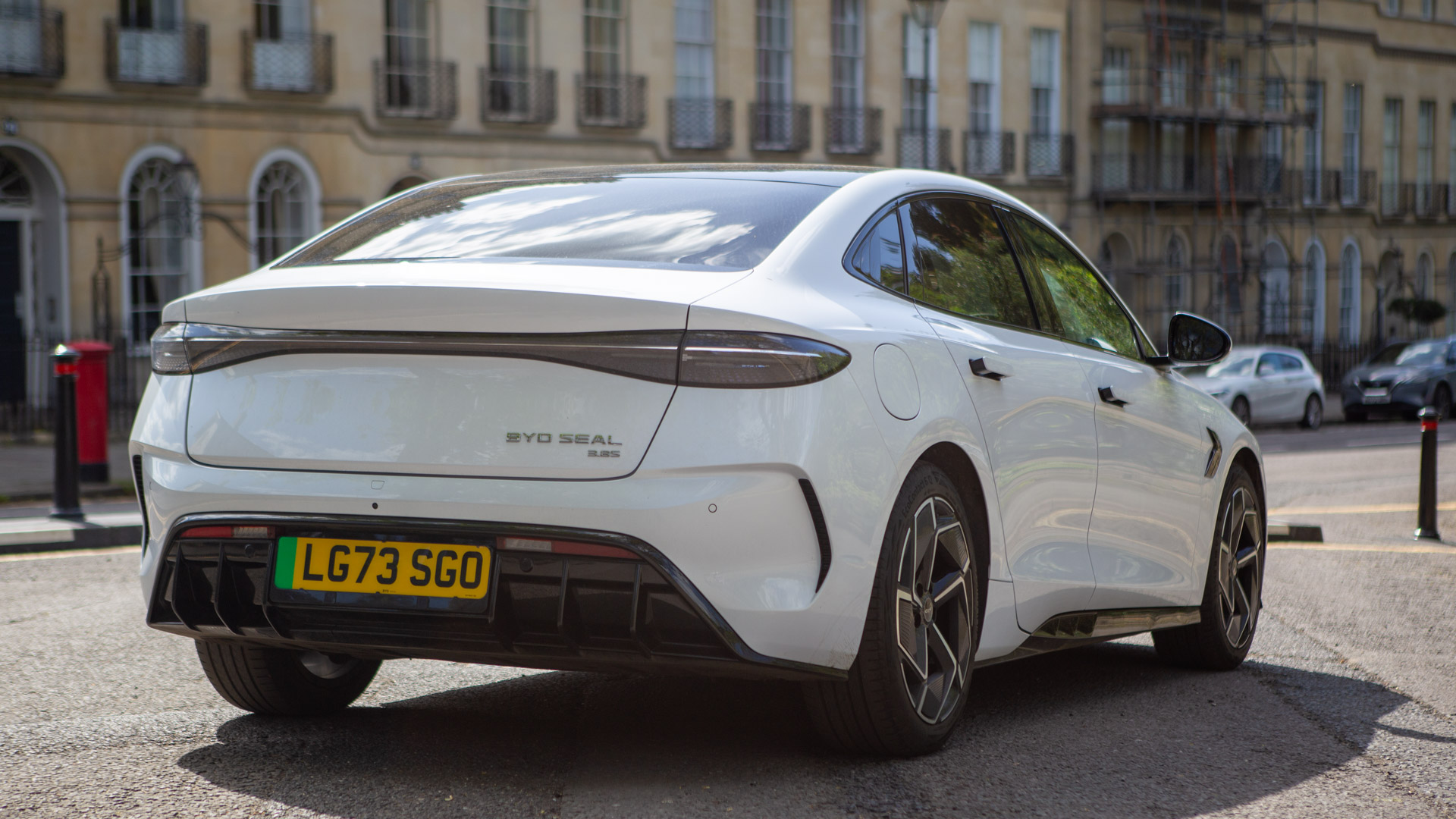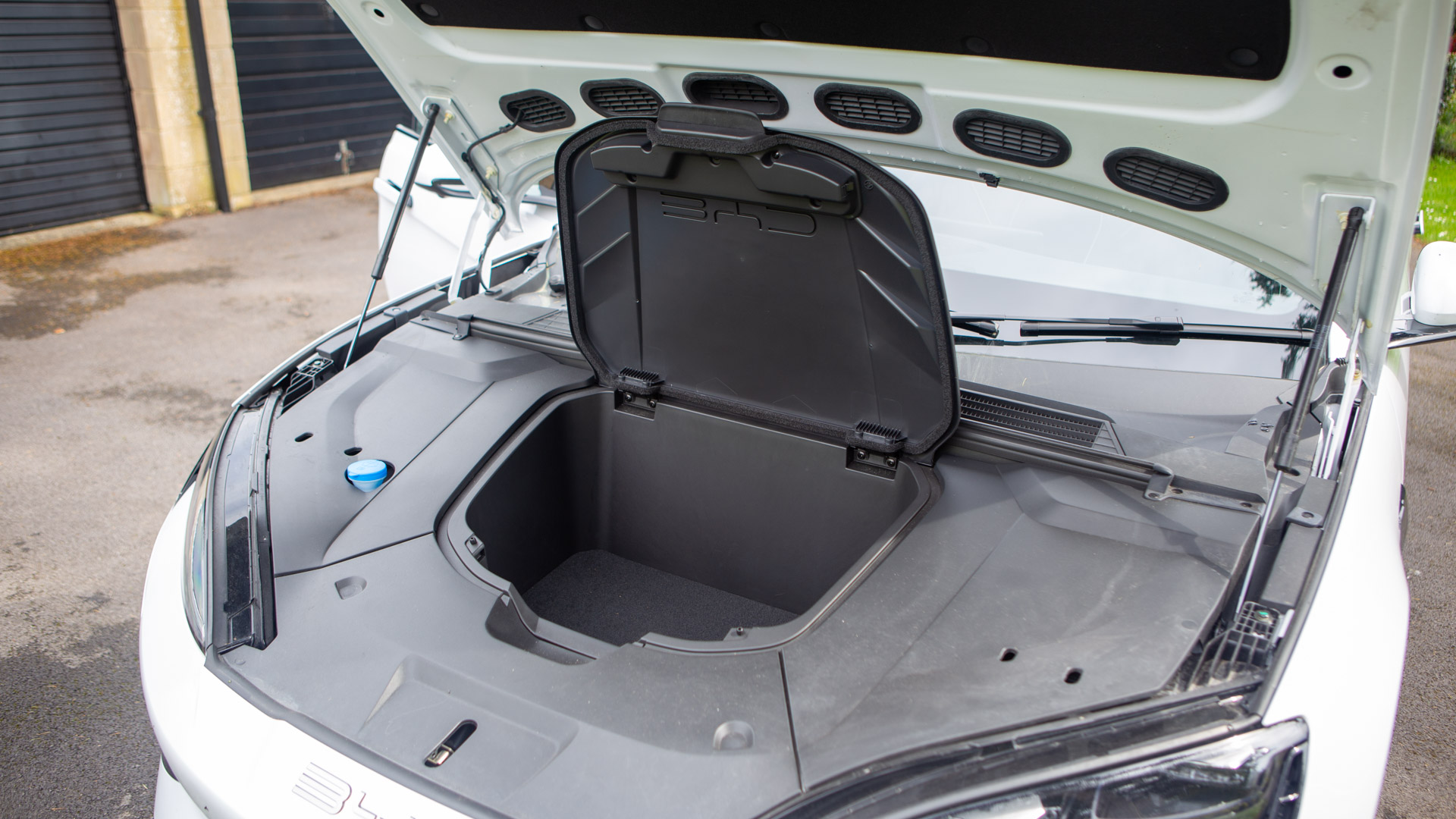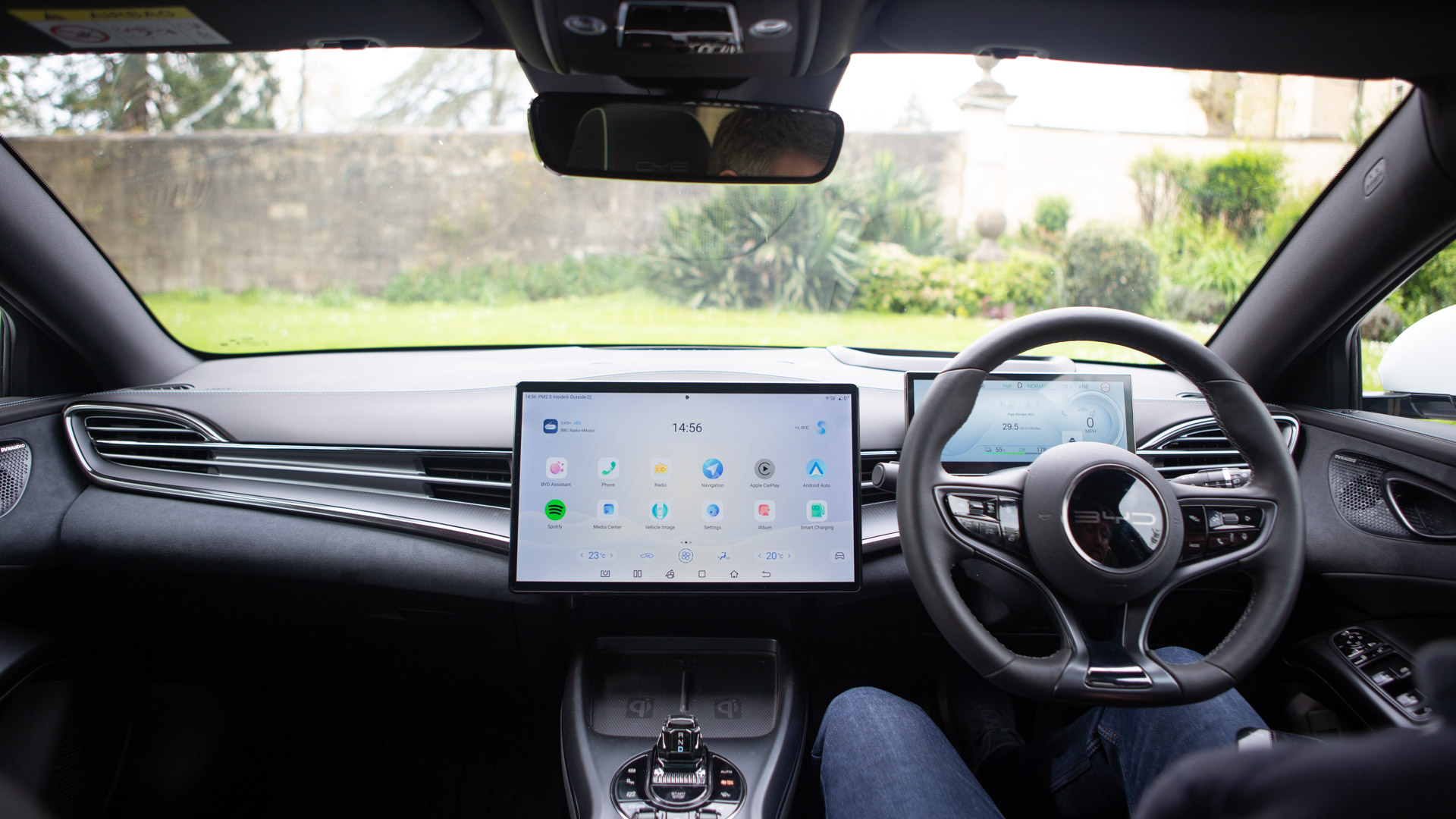BYD Seal review: a tempting Tesla rival
With a 3.8-second acceleration and a sub-£50k price point, there's lots to love about the BYD Seal


The Chinese automaker's flagship EV provides great looks, a comfortable ride and a whole lot of power. Though there's some clever tech on board, it comes up a little short on its competitors in places.
-
+
Great looking car
-
+
Blistering acceleration
-
+
Very comfy ride
-
-
Not class-leading range or charging speed
-
-
No wireless Carplay/Android Auto
Why you can trust T3

More likely named after the aquatic mammal than the 90s British pop star the BYD Seal is the company’s flagship electric vehicle in the UK. BYD, or Build your Dreams to give it its full name, has been producing cars in China since 1995 but only entered the UK market in 2023.
BYD’s current range all have ties to the ocean, from the Dolphin to the Frigate. Though a Seal might not seem a natural name choice for a top-of-the-range model, it's far more memorable than another three-digit model number. There’s no questioning its looks, though. The Seal gives off premium vibes and stands proudly among the competition.
The press model I drove for a couple of weeks attracted plenty of attention, from those asking what it was, to those in the know that wanted to know if it was any good. It was also mistaken for a Tesla on occasion, which is likely to be a compliment.

Price and availability
The BYD Seal is available to order now in the UK and starts from £45,695. There are two versions of the car, a Design edition with a single motor offering rear-wheel drive and an Excellence edition with a second motor on the front axle to deliver all-wheel-drive and faster 3.8-second 0-62mph acceleration. This top model is priced from £48,695 and was the model I was testing.
For comparison, the Tesla Model 3 starts from £39,990 for its rear-wheel drive model and £49,990 for its 4.2-second, all-wheel drive model. There’s also the faster performance edition with a 2.9-second 0-60mph, but that will cost you from £59,990. The Seal is certainly competitively priced to the Tesla, making it a tempting alternative for anyone considering one.

Features and design
Like many recent electric saloon models, the Seal has a fairly generic look. The slick aerodynamic design has elements that look similar to the Porsche Taycan and the Tesla Model 3, but also a huge number of others that were on display at this year’s China Auto Show.
There’s no fake grill here. Instead, the front comes to a point, like a shark’s nose rather than the soft nose of a seal. The headlights also come down to a point towards the centre, following the smooth lines of the sporty bonnet. Daylight running LEDs extend down at the corners, like teardrops, also providing a welcome light when you approach the car.
Get all the latest news, reviews, deals and buying guides on gorgeous tech, home and active products from the T3 experts
Large vents in the corners of the front skirting help direct the air around the car, and more behind the wheel arches like gills, giving it a sculpted appearance. The rear is dominated by double U-shaped light clusters that join in the centre to create one long light strip on an otherwise clean saloon back. Below the model name on the back of the Excellence edition, the 3.8S looks like a reference to engine size, when actually it’s the acceleration (3.8 seconds). In the UK, the cars are badged simply as BYD on the rear rather than the full Build Your Dreams name, as they are in China.
There is a choice of five colours for the paintwork, though my test model was in Polar White. Inside you have a choice of a Tahitian Blue or Black for the interior. The alloys have a single 19-inch option, with a fan-like multi-spoke design, which really suits the car.
It’s a well-put-together design and does look very premium, certainly for the price. Arguably, it's better looking than the Tesla Model 3, especially thanks to the allows and teardrop daylight LEDs.

Interior and tech
Inside the Seal, the central screen dominates. This is a 15.6-inch touchscreen display that can be rotated 90 degrees between vertical and horizontal orientations at the touch of a button. There’s a second 10.25-inch screen behind the wheel for the driving dynamics, and a head-up display to help keep your eyes on the road.
One thing to note is that when the screen is turned into portrait or vertical orientation, it becomes difficult to see wearing polarised sunglasses. The head-up display is also lost when viewed through glasses, which is a shame.
The central screen is used for the majority of functions within the car, aside from a few controls on the steering wheel and the centre console. Climate control, including the positioning of the vents, is all via the screen. There is the option of Android Auto or Apple CarPlay connections, though this is currently wired only, rather than wireless.
The OS is big and clear, though feels more like a giant Android tablet than something integrated. Pressing the square button allows you to cycle through the open apps, while a home button takes you back to the main screen. There is native Spotify integration, so you can log directly into your account and play music without connecting your phone.

Controls like those pesky ADAS beeps are hidden behind a few levels of menu, so if you do want to turn them off, you need to really dig – and as is the case with all new models, it will switch back on every time you start the car. You also get a warning voice if you stay over the speed limit.
The adaptive/intelligent cruise control system works really well, providing both steering assistance and speed control, without too much of a fight with the wheel to prove you’re still holding it on regular occasions. There are also lots of external cameras, giving you a full 360-degree view of the car for parking.
The drive selector in the centre console and the surrounding buttons all provide solid feedback and are pleasant to use. While it doesn’t necessarily feel like a luxury interior, it’s all very premium in its finish, much like a high-specced mid-range brand.
The surprise success for me was actually the audio. Provided by Danish speaker company Dynaudio, the 12-speaker system delivers a powerful deep bass and plenty of definition. While it’s not quite as crisp as some top-end systems, it’s entirely pleasant to listen to.

Performance and handling
There’s no denying that the Seal is quick. An acceleration of 3.8 seconds (0-60mph) puts it level with the BMW iX M60 and the Mercedes AMG EQS 53, though not as quick as some of the performance spec Teslas. Even in normal mode, there’s tons of power here, but when you switch to Sport mode, the suspension and steering tighten up, and the driver display switches to a red colour to give you the full experience.
Driving through city streets and country roads, the Seal feels really smooth the drive and almost wafts along. Open it up on the motorway, and inside the cabin feels just as calm and collected – It helps that the leather seats are pretty comfortable too.
There are no paddles for the regenerative braking on the Seal. Instead, you need to change this in the settings on the touchscreen, and there are only two options. It’s a shame there’s no option to provide one-pedal driving here.
The Seal uses an 82.5kWh battery, which is a unique blade design to help improve rigidity. This delivers a range of up to 323 miles on the Excellence AWD model or 354 miles on the Design RWD model. It’s a decent performance, if not class-leading, and from the time I had with the car, seems to be pretty accurate.
Charging is up to 150kW for DC, which isn’t up there with some of the 800V EVs, but will top out on most UK fast chargers. For home charging it offers up to 11kW AC, so you can charge it overnight in as little as 8.6 hours.

Should I buy the BYD Seal?
It’s quite surprising just how good the BYD Seal is. This is an extremely proficient electric car that offers some great features for an affordable price. It certainly offers a valid alternative for those considering a Tesla Model 3, Hyundai Ioniq 6 or Kia EV6.
There are certainly some benefits to it, such as the huge rotating screen, blistering acceleration and comfortable ride. However, it remains beaten in range, charging speed and some tech options – the lack of wireless CarPlay is likely a deal breaker for some.
However, if you’re looking for a unique EV under £50k, the BYD Seal should definitely be on your shortlist.


As T3's Editor-in-Chief, Mat Gallagher has his finger on the pulse for the latest advances in technology. He has written about technology since 2003 and after stints in Beijing, Hong Kong and Chicago is now based in the UK. He’s a true lover of gadgets, but especially anything that involves cameras, Apple, electric cars, musical instruments or travel.